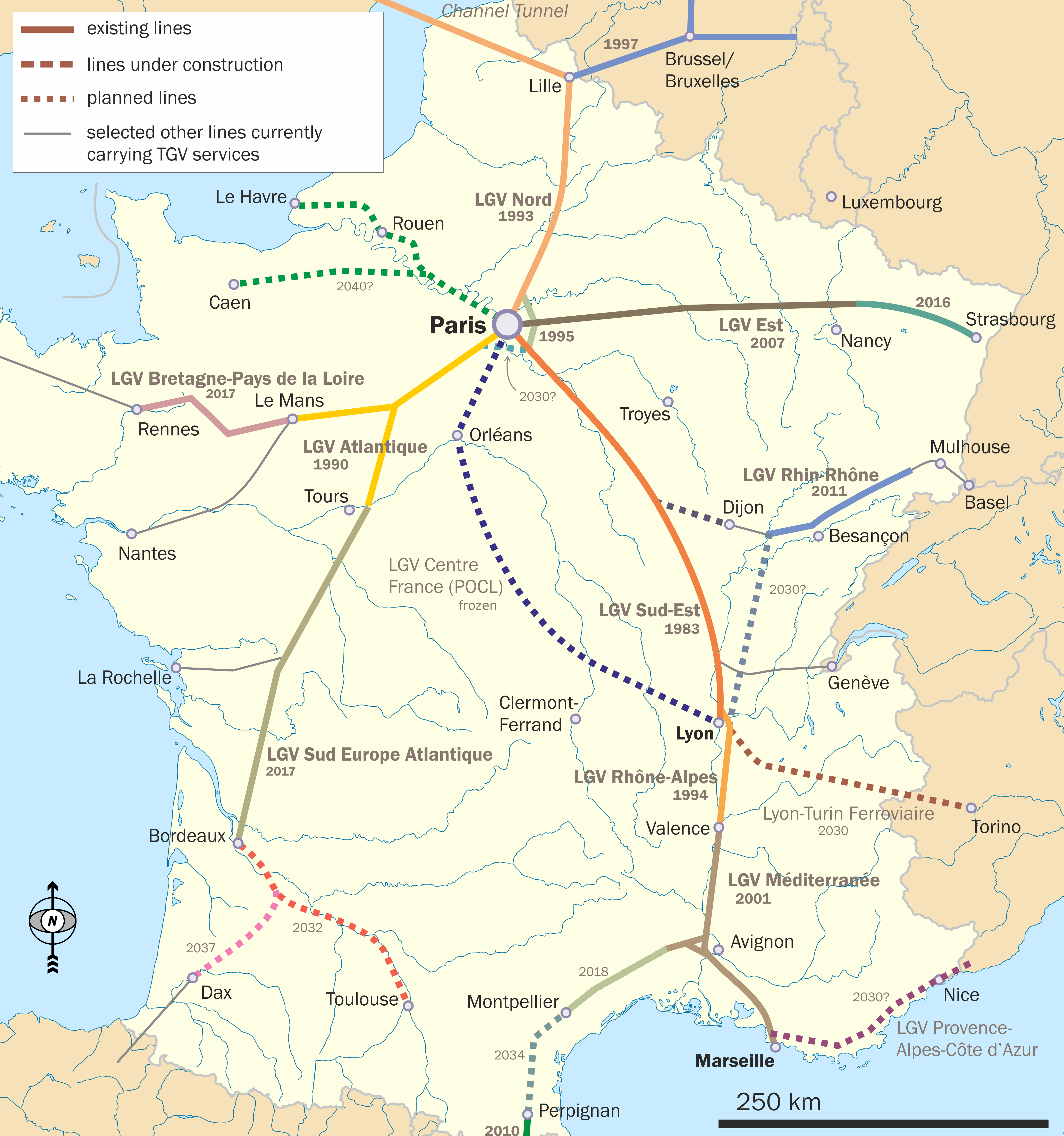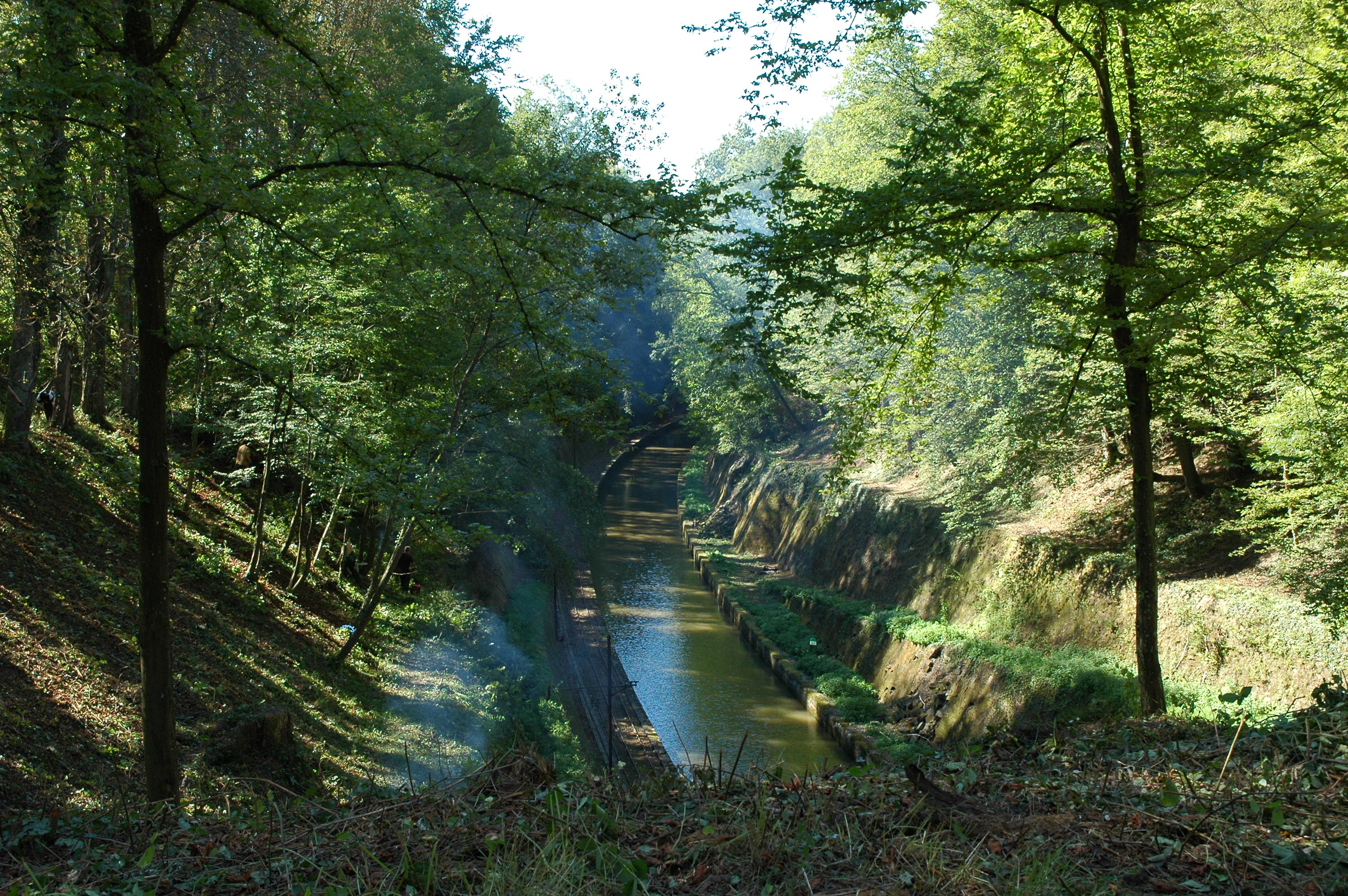|
Eckwersheim
Eckwersheim is a commune, in the Bas-Rhin department in Grand Est in north-eastern France. It is around north of Strasbourg. On 14 November 2015 the commune was the location of a derailment during testing of a TGV train along the LGV Est high-speed rail line. At least ten people were killed after the train caught fire and plunged into the Marne–Rhine Canal. Notable people Engraver Henry Wolf was born in Eckwersheim, only to eventually live and die in New York City. See also * Communes of the Bas-Rhin department The following is a list of the 514 communes of the Bas-Rhin department of France. The communes cooperate in the following intercommunalities (as of 2020):Communes of Bas-Rhin {{BasRhin-geo-stub ... [...More Info...] [...Related Items...] OR: [Wikipedia] [Google] [Baidu] |
Eckwersheim Derailment
On 14 November 2015, a TGV train derailed in Eckwersheim, Alsace, France, while performing commissioning trials on the second phase of the LGV Est high-speed rail line, which was scheduled to open for commercial service five months later. The derailment resulted in 11 deaths among those aboard, while the 42 others aboard the train were injured. It was the first fatal derailment in the history of the TGV and the third derailment since the TGV entered commercial service in 1981. The test train was traveling eastbound on the southern track when it entered a curve at — over its assigned speed—causing the rear bogie of the lead power car to derail to the left (outside of curve) due to centrifugal forces. The lead power car separated from the rest of the train, and the rear of the lead power car struck the concrete parapet on the abutment to a bridge over the Marne–Rhine Canal. The power car slid along the left parapet of the bridge and overturned, sliding down the embankment an ... [...More Info...] [...Related Items...] OR: [Wikipedia] [Google] [Baidu] |
LGV Est
The Ligne à Grande Vitesse Est européenne (East European High Speed Line), typically shortened to LGV Est, is a French high-speed rail line that connects Vaires-sur-Marne (near Paris) and Vendenheim (near Strasbourg). The line halved the travel time between Paris and Strasbourg and provides fast services between Paris and the principal cities of Eastern France as well as Luxembourg, Germany and Switzerland. The LGV Est is a segment of the Main Line for Europe project to connect Paris with Budapest with high-speed rail service. The line was built in two phases. Construction on the from Vaires-sur-Marne to Baudrecourt (near Metz and Nancy) began in 2004; the first phase entered into service in June 2007. Construction on the second phase from Baudrecourt to Vendenheim began in June 2010; the second phase opened to commercial service on 3 July 2016. Opening of the second phase was delayed after a train derailed near Eckwersheim during commissioning trials, resulting in 11 de ... [...More Info...] [...Related Items...] OR: [Wikipedia] [Google] [Baidu] |
Henry Wolf (engraver)
Henry Wolf (1852–1916) was a French-born wood engraver who lived and worked in the United States during his most influential work period and until his death. Henry Wolf was born on August 3, 1852 in Eckwersheim, France. He lived in Strasbourg and studied under Jacques Levy and exhibited in Paris. Henry Wolf moved to New York City in 1871, where he created wood engravings of works by Gilbert Stuart, Enric Serra Auqué, Frank Weston Benson, Howard Pyle, Henry Salem Hubbell, John Singer Sargent, A. B. Frost, Jan Vermeer, Jean-Léon Gérôme, Aimé Morot and Édouard Manet. Many of his engravings were published in ''Scribner's Magazine,'', ''Harper's Monthly'', and ''Century Magazine''. In 1896 he started engraving his own artwork. He exhibited 144 wood engravings at the 1915 Panama-Pacific International Exposition in San Francisco. He was awarded the Exposition's Grand Prize in printmaking that year. He died in home in New York City on March 18, 1916. His works are held in the ... [...More Info...] [...Related Items...] OR: [Wikipedia] [Google] [Baidu] |
Communes Of The Bas-Rhin Department
The following is a list of the 514 communes of the Bas-Rhin department of France. The communes cooperate in the following intercommunalities (as of 2020):BANATIC Périmètre des EPCI à fiscalité propre. Accessed 3 July 2020. * Eurométropole de Strasbourg * * |
Communes Of France
The () is a level of administrative division in the French Republic. French are analogous to civil townships and incorporated municipalities in the United States and Canada, ' in Germany, ' in Italy, or ' in Spain. The United Kingdom's equivalent are civil parishes, although some areas, particularly urban areas, are unparished. are based on historical geographic communities or villages and are vested with significant powers to manage the populations and land of the geographic area covered. The are the fourth-level administrative divisions of France. vary widely in size and area, from large sprawling cities with millions of inhabitants like Paris, to small hamlets with only a handful of inhabitants. typically are based on pre-existing villages and facilitate local governance. All have names, but not all named geographic areas or groups of people residing together are ( or ), the difference residing in the lack of administrative powers. Except for the municipal arrondi ... [...More Info...] [...Related Items...] OR: [Wikipedia] [Google] [Baidu] |
Strasbourg Eurométropole
Strasbourg (, , ; german: Straßburg ; gsw, label=Bas Rhin Alsatian, Strossburi , gsw, label=Haut Rhin Alsatian, Strossburig ) is the prefecture and largest city of the Grand Est region of eastern France and the official seat of the European Parliament. Located at the border with Germany in the historic region of Alsace, it is the prefecture of the Bas-Rhin department. In 2019, the city proper had 287,228 inhabitants and both the Eurométropole de Strasbourg (Greater Strasbourg) and the Arrondissement of Strasbourg had 505,272 inhabitants. Strasbourg's metropolitan area had a population of 846,450 in 2018, making it the eighth-largest metro area in France and home to 14% of the Grand Est region's inhabitants. The transnational Eurodistrict Strasbourg-Ortenau had a population of 958,421 inhabitants. Strasbourg is one of the ''de facto'' four main capitals of the European Union (alongside Brussels, Luxembourg and Frankfurt), as it is the seat of several European instituti ... [...More Info...] [...Related Items...] OR: [Wikipedia] [Google] [Baidu] |
Bas-Rhin
Bas-Rhin (; Alsatian: ''Unterelsàss'', ' or '; traditional german: links=no, Niederrhein; en, Lower Rhine) is a department in Alsace which is a part of the Grand Est super-region of France. The name means 'Lower Rhine', referring to its lower altitude among the two French Rhine departments: it is downstream of the Haut-Rhin (Upper Rhine) department. Note that both belong to the European Upper Rhine region. It is, with the Haut-Rhin (Upper Rhine), one of the two departments of the traditional Alsace region which until 1871, also included the area now known as the Territoire de Belfort. The more populous and densely populated of the pair, it had 1,140,057 inhabitants in 2019.Populations légales 2019: 67 Bas-Rhin INSEE The |
Departments Of France
In the administrative divisions of France, the department (french: département, ) is one of the three levels of government under the national level ("territorial collectivities"), between the administrative regions and the communes. Ninety-six departments are in metropolitan France, and five are overseas departments, which are also classified as overseas regions. Departments are further subdivided into 332 arrondissements, and these are divided into cantons. The last two levels of government have no autonomy; they are the basis of local organisation of police, fire departments and, sometimes, administration of elections. Each department is administered by an elected body called a departmental council ( ing. lur.. From 1800 to April 2015, these were called general councils ( ing. lur.. Each council has a president. Their main areas of responsibility include the management of a number of social and welfare allowances, of junior high school () buildings and technical staff, ... [...More Info...] [...Related Items...] OR: [Wikipedia] [Google] [Baidu] |
Grand Est
Grand Est (; gsw-FR, Grossa Oschta; Moselle Franconian/ lb, Grouss Osten; Rhine Franconian: ''Groß Oschte''; german: Großer Osten ; en, "Great East") is an administrative region in Northeastern France. It superseded three former administrative regions, Alsace, Champagne-Ardenne and Lorraine, on 1 January 2016 under the provisional name of Alsace-Champagne-Ardenne-Lorraine (; ACAL or, less commonly, ALCA), as a result of territorial reform which had been passed by the French Parliament in 2014. The region sits astride three water basins (Seine, Meuse and Rhine), spanning an area of , the fifth largest in France; it includes two mountain ranges (Vosges and Ardennes). It shares borders with Belgium, Luxembourg, Germany and Switzerland. As of 2017, it had a population of 5,549,586 inhabitants. The prefecture and largest city, by far, is Strasbourg. The East of France has a rich and diverse culture, being situated at a crossroads between the Latin and Germanic worlds. This hi ... [...More Info...] [...Related Items...] OR: [Wikipedia] [Google] [Baidu] |
France
France (), officially the French Republic ( ), is a country primarily located in Western Europe. It also comprises of Overseas France, overseas regions and territories in the Americas and the Atlantic Ocean, Atlantic, Pacific Ocean, Pacific and Indian Oceans. Its Metropolitan France, metropolitan area extends from the Rhine to the Atlantic Ocean and from the Mediterranean Sea to the English Channel and the North Sea; overseas territories include French Guiana in South America, Saint Pierre and Miquelon in the North Atlantic, the French West Indies, and many islands in Oceania and the Indian Ocean. Due to its several coastal territories, France has the largest exclusive economic zone in the world. France borders Belgium, Luxembourg, Germany, Switzerland, Monaco, Italy, Andorra, and Spain in continental Europe, as well as the Kingdom of the Netherlands, Netherlands, Suriname, and Brazil in the Americas via its overseas territories in French Guiana and Saint Martin (island), ... [...More Info...] [...Related Items...] OR: [Wikipedia] [Google] [Baidu] |
Strasbourg
Strasbourg (, , ; german: Straßburg ; gsw, label=Bas Rhin Alsatian, Strossburi , gsw, label=Haut Rhin Alsatian, Strossburig ) is the prefecture and largest city of the Grand Est region of eastern France and the official seat of the European Parliament. Located at the border with Germany in the historic region of Alsace, it is the prefecture of the Bas-Rhin department. In 2019, the city proper had 287,228 inhabitants and both the Eurométropole de Strasbourg (Greater Strasbourg) and the Arrondissement of Strasbourg had 505,272 inhabitants. Strasbourg's metropolitan area had a population of 846,450 in 2018, making it the eighth-largest metro area in France and home to 14% of the Grand Est region's inhabitants. The transnational Eurodistrict Strasbourg-Ortenau had a population of 958,421 inhabitants. Strasbourg is one of the ''de facto'' four main capitals of the European Union (alongside Brussels, Luxembourg and Frankfurt), as it is the seat of several European insti ... [...More Info...] [...Related Items...] OR: [Wikipedia] [Google] [Baidu] |
Marne–Rhine Canal
The Canal de la Marne au Rhin (Marne–Rhine Canal) is a canal in north-eastern France. It connects the river Marne and the Canal entre Champagne et Bourgogne in Vitry-le-François with the port of Strasbourg on the Rhine. The original objective of the canal was to connect Paris and the north of France with Alsace and Lorraine, the Rhine, and Germany. The long canal was the longest in France when it opened in 1853. Description The canal is suited for small barges ('' péniches''), with a maximum size of in length and in width. It has 154 locks, including two in the Moselle. There are four tunnels. The Saint-Louis-Arzviller inclined plane is located between Arzviller and Saint-Louis and its construction replaced 17 locks. In 1979, a section along the Moselle valley was closed following completion of the Moselle canalisation works between Frouard and Neuves-Maisons. The route is now made up as follows: * Canal de la Marne au Rhin, western section (PK 0-131), connecting with t ... [...More Info...] [...Related Items...] OR: [Wikipedia] [Google] [Baidu] |





